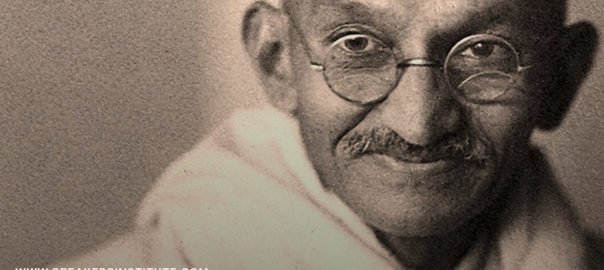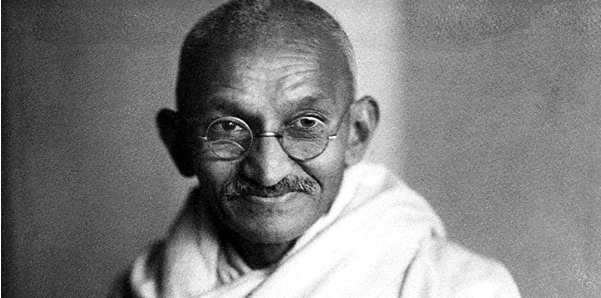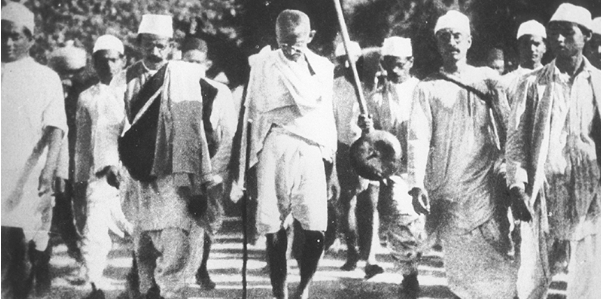

The “Quit India” speech helped to create a movement that ultimately led to India’s independence. Find out what made that speech so powerful.
Mohandas Gandhi is a cultural icon, both in India and for the peace movement in general. His dedication to peaceful protest played a huge role in helping India gain its independence from Britain.
But it was his speaking ability that set him apart as a true leader of the movement.
Gandhi was a true believer in the power of words over violence. With his speeches, he inspired masses of people to join together to change the course of history.
And he did it during a dire situation. Gandhi faced massive political opposition at the time of his speech, which he gave in 1942. With Britain focused on World War II, they faced pressure to resolve the situation as quickly as possible.
This led to persecution for the great man.
But it didn’t stop his cause

Who Was Gandhi?
Born in 1869, Mohandas Gandhi was an Indian lawyer who turned his attention towards political activism later in life. He was the figurehead of India’s charge towards independence. In fact, many consider him to be the father of the country.
It was through his work that an entire nation felt inspired to change its situation.
On the day of his most famous speech, political tensions in India were at an all-time high. The seeds of rebellion against British rule were already planted.
And on 8th August 1942, they sprouted into a full movement.
It was on this day that Gandhi created the “Quit India” movement during a meeting of the All-India Congress Committee. That committee demanded an immediate end to British rule in India. And it gave Gandhi the power to lead the movement that would achieve that goal.
Most importantly, they would reach that goal through peaceful protest.
In the wake of the announcement, Gandhi gave two speeches. The first he gave in Hindi, speaking directly to his native people. The second he delivered in English with the intent of capturing the attention of the international community.
The very next day, Gandhi was arrested by the British government, along with several other members of the movement.
But his speech inspired an entire nation to adopt his philosophy of peaceful protest. It united an entire nation against British rule and created the movement that would lead to India’s independence.
As a speaker, there’s so much that you can learn from what Gandhi accomplished with his speech.

Lesson #1 – Use Imagery and Metaphor When Speaking on Complex Issues
There’s no denying the difficulty present in the issue of India’s freedom at the time.
With the major powers of the world embroiled in a huge war, Gandhi used metaphor to create vivid imagery that related to the crisis.
Take for example the following phrase:
“In the present crisis, when the earth is scorched by the flames of Hisma and crying out for deliverance.”
In one line, Gandhi confronts the issue of war and relates it to the global desire to see change. From here, he is able to both talk about India’s desire for change and, most importantly, its desire for a peaceful resolution.
Gandhi did not want India to embroil itself in a war that had already claimed millions of lives. Using such vivid imagery helped him to steer his audience away from the idea of violent conflict. Yet, it still incited within them a passion for the change that they all wanted to see happen.
Lesson #2 – He Had True Belief in his Own Words
From many other people, the call for peaceful protest might have sounded disingenuous.
But from Gandhi, that call was just an extension of the life that he had always led. Gandhi had true belief in his words, which lent them an important authenticity. He left no room for misinterpretation of his beliefs. And he was clear in his desire to separate the concept of British rule from that of British people.
He made it clear that the people themselves were not the enemy.
Even in a speech calling for independence, he made it clear that he had no quarrel with those people. This reinforced his notion of peaceful protest.
This belief structure is evident throughout, particularly in the closing moments of his speech. Gandhi said:
“Even if all the United Nations opposed me, even if the whole of India forsakes me, I will say, ‘You are wrong. India will wrench with non-violence her liberty from unwilling hands.’ I will go ahead not for India’s sake alone, but for the sake of the world.”
Gandhi desired only one thing for his people and he related that to his overall belief in human rights and freedom for all.
That made him all the more persuasive because it became clear that his fight was with an ideology.
Lesson #3 – He Encouraged People to Question Their Fight
Gandhi built on this idea of separating the concept of fighting imperialism from that of fighting people. He was very clear in his desire to get rid of any confusion between the two.
Examine this passage of his speech:
“Ours is not a drive for power, but purely a non-violent fight for India’s independence.”
At that moment, he warns his listeners away from the idea of fighting to gain power. If they were to do that, they would simply take on the same imperialist traits of their oppressors.
A few minutes later, he clarified his goal:
“The people make no distinction between British imperialism and the British people. To them, the two are one. This hatred would even make them welcome the Japanese. It is most dangerous. It means that they will exchange one slavery for another. We must get rid of this feeling. Our quarrel is not with the British people, we fight their imperialism.”
Again, he’s encouraging his audience to question the very reason that they’re fighting. And in doing so, he’s creating a clear goal.
India must battle against imperialism, not people.
By going to these lengths to clarify, Gandhi was able to unite an entire nation behind one cause. He left no room for misinterpretation of his agenda.
Lesson #4 – He Addressed Everyone as Equals
Gandhi also confronted the possibility of conflict within his own nation. India has two dominant religions – Islam and Hinduism.
He made it clear that independence should not spark a war for power between the two religions. Instead, he called for unity, respect, and tolerance:
“Hindu-Muslim unity is not a new thing. Millions of Hindus and Mussalman have sought after it. I consciously strove for its achievement from my boyhood.”
Later, he clarified this point:
…The solution of Hindu-Muslim question, too, cannot be achieved by a resort to violence. If the Hindus tyrannize over the Mussalman, with what face will they talk of a world federation?”
Again, he returns to his key thread here. Gandhi wanted to achieve unity through peaceful protest. And in doing so, he aimed to show the world that violence was not the answer to problems.
He establishes equality of purpose and people. Plus, he highlights the hypocrisy of one religion chasing dominance over another.
This served to establish him as a leader for both religions. Gandhi brought those with conflicting ideologies together to confront a common cause. And in doing so, he reinforced his belief in tolerance and cooperation.
Lesson #5 – He Used a Powerful Call to Action
Gandhi finished the English portion of his speech with a simple call to action for his people:
“I have pledged the Congress and the Congress will do or die.”
That one line told all listeners that Gandhi would die for his beliefs. And it inspired within his followers that they should do the same.
“Do or die” became the mantra for the movement. And the true irony is that Gandhi received inspiration for the phrase from a poem commemorating British bravery.
In Tennyson’s poem Charge of the Light Brigade, he wrote:
“Their’s not to make reply,
Their’s not to reason why,
Their’s but to do and die.”
Gandhi created a mantra while taking a subtle shot against British imperialism using a phrase from a famous British poem.
The Power of Belief
The true power of Gandhi’s speech came from its constant reinforcement of his beliefs. Gandhi returned to the key threads of peaceful protest and liberty for all throughout.
His fight was not against any group of people.
It was against an ideology that threatened all people.
This is why he was able to influence so many. Even those outside of India could identify with his words.
It took another five years for India to finally gain the independence that it craved. Gandhi passed away just a few months later.
But even today, we all recognise him as a figure of peace. While India reveres him as a founder of the nation that it is today, the rest of the world sees him as an icon.
The “Quit India” speech played a huge role in Gandhi becoming this most influential of figures.
And Speakers Institute can help you to leverage some of the techniques that he used in your own speaking.
We encourage you to do the following:
- Take me to GREENROOM. The #1OnlineHub connecting you to the world’s leading Influencers, Training and Curriculum.
- For information on dates and times of our live events, just go here: LIVE EVENTS